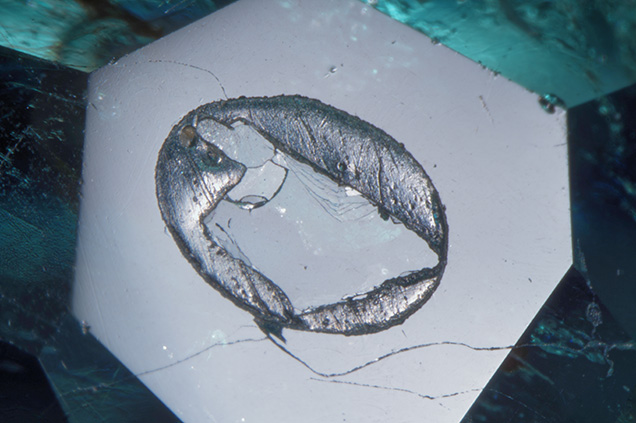Unique Drilled Emerald

A 3.39 ct emerald, as confirmed by standard gemological testing, was received by the New York lab (figure 1). At first glance it appeared to be a typical emerald with moderate clarity enhancement. It was categorized as F2, indicating that the fracturing present in the stone had a noticeable but not significant effect on the face-up appearance. Further microscopic examination of the pavilion revealed two prominent drill holes filled with a resin and emerald fragments (figure 2). The resin displayed a blue and yellow flash effect, and gas bubbles trapped in the resin were also present (figure 3). The filler had much higher relief than the emerald host and was clearly visible under reflected light due to the difference in luster between the two materials (figure 4).


The question arose as to why such a treatment would be performed on this stone. Microscopic observation did not yield any clues. One hypothesis would be that eye-visible inclusions were removed by drilling, analogous to the laser-drilling treatment well known in diamonds. Assuming this theory is true, the “enhancement” actually significantly reduced the value of this good-quality emerald. We concluded that the stone contained a resinous material in the drill holes along with emerald fragments. This was the first time GIA’s New York lab had witnessed this type of enhancement in an emerald.




